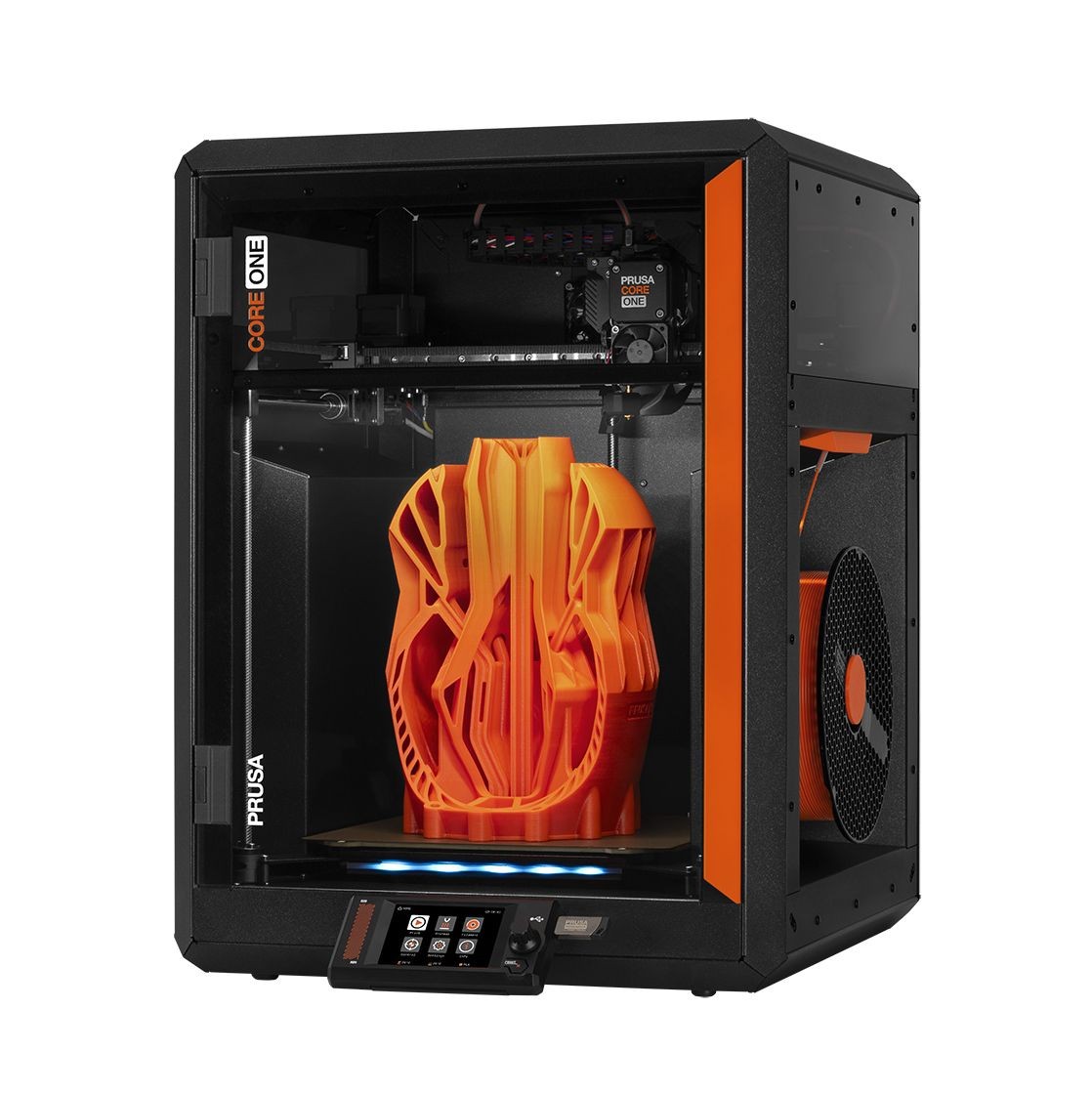Compare Core One vs Kobra S1 Combo
Comparison between the best 3D printers
Choose the best 3D printer at the best price. The cheapest 3D printers are here.
Buy a 3D printer here with 3D Fila.
 |
 |
|
| Model | Core One |
Kobra S1 Combo[BUY Kobra S1 Combo] |
| Printing Material | Filament | Filament |
| Buy Filament for Prusa Core One | Buy Filament forAnycubic Kobra S1 Combo | |
| Estimated price | $1200,00 | $599,00 |
| Manufacturer | Prusa | Anycubic |
| Release Year | 2025 | 2025 |
| Print Volume [mm] | 250x220x270 | 250x250x250 |
| Printer Size [mm] | 385x340x620 | 400x410x490 |
| Weight [kg] | 14 | 18 |
| Power Loss Recovery | YES | YES |
| Enclosed printer | YES | YES |
| Bed Leveling | Automatic | Automatic |
| Filament End Sensor | YES | YES |
| Bed type | Heated | Heated |
| Power supply system | Direct Drive | Direct Drive |
| Standard nozzle | 0,4 | 0,4 |
| Maximum Nozzle Temperature [°C] | 300 | 320 |
| Maximum Bed Temperature [°C] | 120 | 120 |
| Maximum printing speed [mm/s] | 500 | 600 |
| Filament holder | YES | YES |
| Camera for supervision | NO | NO |
| Recommended filaments | PLA, TPU, TPE, HIPS, ABS, PETG, WOOD, PC, PA, PVA, ASA | PLA, PETG, TPU[1], ABS, ASA |
| Recommended slicers | Cura, Prusa Slicer, Orca | Anycubic Slicer Next, Orca Slicer |
| Maximum Resolution [mm] | 0,01 | 0,01 |
| Processor | xBuddy 32 bit | |
| Display | Touchscreen 3,5'' | Touchscreen 4,3'' |
| Power Supply | 240 W | |
| Connectivity | SD | USB, Wifi |
| Operating systems | Windows, Linux e Macbook | Windows, Linux e Macbook |
| Date of registration in the system | 2024-11-27 | 2025-02-25 |
| Release date | 2025 | 2025 |
| Extra features | The Prusa Core One is a CoreXY 3D printer featuring a robust steel frame, a 3.5" touchscreen, and a heated chamber for technical filaments. It offers 360° cooling for improved print quality and supports upgrades from the MK4S model. With a compact design, a print volume of 270x250x220 mm, and compatibility with the MMU3 for multi-color printing, it stands out for its ease of maintenance, precision, and speeds up to 260% faster than the MK3S+. | The Anycubic Kobra S1 Combo is a fully enclosed CoreXY 3D printer with speeds up to 600mm/s and 20,000mm/s² acceleration. It features a 320°C hotend, native multicolor printing (4 to 8 colors with ACE Pro), and active filament drying. Equipped with LeviQ 3.0 auto-leveling, camera monitoring, AI failure detection, carbon filtration, and a 4.3 touchscreen, it ensures high-quality, efficient, and reliable 3D printing. |
| Support for multiple colors and materials (AMS and CFS) | YES | YES |
Notes * |
||
| Cost-benefit | 7 / 10 | 7 / 10 |
| Hardware | 6 / 10 | 8 / 10 |
| Tela | . | . |
| Print volume | 3 / 10 | 3 / 10 |
| Performance | 4 / 10 | 5 / 10 |
| [BUY Kobra S1 Combo] |
Conclusion |
| ### Conclusion When comparing the Prusa Core One and the Anycubic Kobra S1 Combo, both printers share some similarities, such as their release year and core features like automatic bed leveling and power loss recovery. However, significant differences set them apart. The Prusa Core One, while positioned at a higher price point, offers a robust design characterized by a steel frame and precision printing capabilities. Its advanced cooling system enhances the print quality and makes it suitable for a wider variety of filaments, highlighting its technical prowess. The printer’s compact design and compatibility with multi-material upgrades also add to its versatility, appealing to those who prioritize reliability and precision. On the other hand, the Anycubic Kobra S1 Combo provides excellent value at a lower price, making it a compelling option for those on a budget. It boasts faster printing speeds and a larger print volume, accommodating bigger projects. Its advanced features, such as camera monitoring and AI failure detection, cater to users seeking enhanced automation and convenience in 3D printing. In summary, the choice between these two 3D printers ultimately hinges on your specific needs and budget. If you seek higher precision, advanced cooling, and better filament versatility, the Prusa Core One may justify its higher cost. Conversely, if you prioritize speed, larger build capacity, and an affordable price, the Anycubic Kobra S1 Combo is a strong contender. Both options deliver solid performance, catering to diverse user preferences in the 3D printing landscape. |

